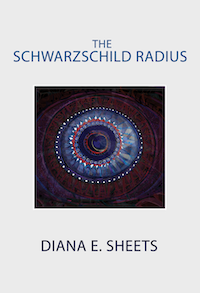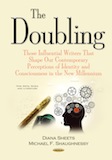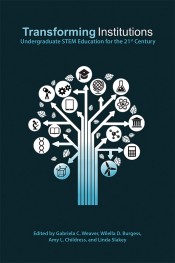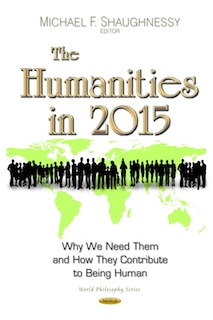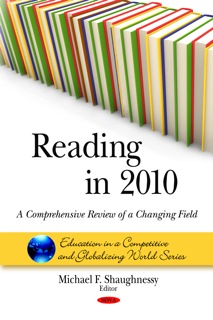The Sarah Palin Effect
Copyright © 2008 by Diana E. Sheets
Given the current fiscal crisis that has undermined our financial institutions, threatened the solvency of many Americans, and shaken global markets, the Obama/Biden ticket appears poised for victory. Readers may dismiss the significance of Palin’s bid for the Vice Presidency. They couldn’t be more mistaken. Her selection will impact party politics for years to come.
Voters mistakenly assume that the Democratic Party, with its “Nurturant Parent” policies founded on “fairness” and remedial social justice, would be more likely to select the first women as president. They are wrong. Hypocritical Democrats give lip service to having a woman on the presidential ticket. Ironically, their men vying for power are increasingly feminized while the two women who have been serious contenders for Democratic Vice President and President thus far—respectively, Geraldine Ferraro (1984) and Hillary Clinton (2008)—exhibit the manly attributes lacking in their male colleagues (www.literarygulag.com/blog/show/6). For this reason the party and its voters were reluctant to support them. By contrast, Republicans, searching for the means and the leadership necessary to attract voters to the Conservative cause are inherently more receptive to a female candidate provided she represents manly virtues while possessing the feminine magnetism necessary to attract the support of party faithful, as well as the enthusiasm of independents—e.g. Sarah Palin. Thus, the Democratic Party, that bastion of reform, is acting regressively while the Republican Party, noted for their resistance to change, is potentially more likely to select a woman as President if she excites its core conservative constituency.
This essay will demonstrate by means of two examples from British history why the Republican Party is more likely than the Democratic Party to elect the first woman as President. The essay will then discuss the Palin narrative and its significance for 21st century American politics.
The British electoral reforms of 1832, 1867, and 1884 extended voting rights to men: respectively, to those of the prosperous middle class, urban workers who met property qualifications, and subsequently to rural labors who also met comparable financial stipulations. Not until 1918 was universal suffrage effectively granted to adult men and, more restrictively, to married women over thirty who met property qualifications. Only in 1928 were women granted voting rights comparable to men.
Nevertheless, the impact of the expanding electorate when combined with the passage of the Corrupt and Illegal Practices Prevention Act (1883), which imposed limits on campaign expenditures and undue influence of voters, brought change. As did the Redistribution of Seats Act (1885), which realigned electoral districts to reflect the changing character of voter constituencies, thereby eroding longstanding social networks based on deference. Consequently, these reforms prompted Lord Salisbury, who became Prime Minister in 1885, to ally the Conservative Party with the Primrose League. It quickly grew in numbers to become the most important extra-parliamentary organization in
The official membership of the Primrose League soared from a relatively modest figure of 11,366 in 1885 to 565,861 two years later. By 1891 it claimed over a million members on its rolls and by 1910 this figure had doubled. However, the Primrose League made no effort to distinguish between active dues-paying members and former participants. Consequently, the figure provided for 1888—672,606—is more indicative of active membership during its heyday in late Victorian Britain than official tallies in later years (3, 127-8, 153-5, 157-60, 311-14).
With an array of titled nobility and gentry represented as leaders and a broad-based participation at its base, the Primrose League was the Conservative Party’s response to the threat of mass democracy. Its effectiveness was largely due to the support of women within its ranks who nurtured a vibrant political subculture that provided entertainment, pageantry, canvassing of prospective voters, and a willingness to escort members to the polls on Election Day by means of horse-drawn carriages. It was through these means that the Conservative Party sought to elicit popular support while skirting the prohibitions imposed by the Corrupt and Illegal Practices Prevention Act (3, 88-9, 93, 95-104, 126-36, 211-26, 240, 243-5, 247-8 252-4, 263-5).
The influence of women in the Primrose League was significant. By the 1890’s, 17.4% of the offices in its Divisional Councils were female. Women constituted 25% of the senior offices of the Habitations, and nearly 30% of their Honorary Secretaries. At the base of the organization, female Wardens and canvassers predominated (126-7, 133-8).
The scope and impact of the Primrose League were without parallel. Herbert Gladstone, youngest son to Prime Minister William Gladstone, expressed the frustrations of Liberals when he suggested, “The League is a curious compound of duchesses and maids of all work . . . . All the unscrupulous women of
Even as late as 1905 when the League’s influence was waning, George Bernard Shaw’s play Major Barbara highlighted the role of the Primrose League in converting workers to ranks of the Conservative Party.
Not by words and dreams; but by thirtyeight [sic] shillings a week, a sound house in a handsome street, and a permanent job. In three weeks he will have a fancy waistcoat; in three months a tall hat and a chapel sitting; before the end of the year he will shake hands with a duchess at the Primrose League meeting, and join the Conservative Party. (311)
While the Conservative Party gave only nominal support to women’s suffrage, nevertheless,
Thus, a strong case could be made that conservative women were viewed by their fathers, uncles, brothers, husbands, sons, and nephews, as well as the party leadership overall as indispensable allies in resisting popular democracy. By contrast, the Liberals saw their women—mothers, aunts, sisters, wives, daughters, and nieces—as potential bluestocking rivals who might challenge male leadership and, by implication, the stature, prominence, and future direction of the party and the men who shaped these policies.
The Conservative Party, on the other hand, was ambivalent. The Grand Council, the governing body of the Primrose League, reflecting the views of the party, issued a Precept in 1889 prohibiting its local associations, Habitations, from publicly supporting the franchise. However, there were frequently violations, which caused the Council to issue repeatedly its prohibition. While the Ladies’ executive opposed granting women the vote, the League as a whole remained officially neutral. Rank-and-file members were sharply divided, prompting individuals to endorse or decry women’s suffrage at the local level (145-8, 151-3).
Fast forward to the late twentieth century. Margaret Thatcher governed as Prime Minister (1979-1990) for longer than any leader in
Now consider the 2008 Presidential Election and the significance of Republican Vice Presidential nominee Sarah Palin. First, her narrative. Sarah was born in
Sarah Palin served on the city council in
While in her second term, Palin introduced a ballot referendum proposing the construction of a sports complex to be financed by a .5% sales tax increase. The $14.7 million facility, although completed on time and within budget, cost an additional $1.3 million due to legal expenditures required to defeat an eminent domain lawsuit. Because of the costs associated with the construction of the sports complex, as well as street and water improvements, the city’s debt rose to $25 million. Nevertheless, through a lobbying agency, Palin secured almost $8 million in earmarks and another $19 million for the greater Wasilla valley (Wikipedia, Sarah Palin).
Palin served two terms as mayor before running unsuccessfully in 2002 for lieutenant governor of
Thus far, Governor Palin’s major accomplishment is the $26 billion gas pipeline to be constructed by TransCanada Pipelines. It will extend from the
What are the parallels between Margaret Thatcher and Sarah Palin? In Ross Douthat & Reihan Salam’s Grand New Party: How Republicans Can Win the Working Class and Save the American Dream (Doubleday, 2008), they suggest that the possibility of continued success of the party rests, in the words of Minnesota Governor Tim Pawlenty, in transforming from the “party of the country club” to the “party of Sam’s Club” (2). The authors make a compelling case that electoral victory for Republicans rests on “Reagan-style Democrats,” voters who have swung back and forth between the two parties while, nonetheless, embracing many conservative values. This constituency is predominantly male. Its members typically have high school degrees, although they rarely graduate from college. They uphold traditional values. They embrace an ownership society and the right to bear arms. Many are Christian and oppose abortion. They want minimum government intervention and maximum personal freedom (2-3, 6-7, 10-2). Sarah and Todd Palin fit this “Sam’s Club” profile, although their assets are greater than those of most Sam’s Club voters.
Just as Margaret Thatcher came from a family of modest means, so does Sarah Palin. Just as Thatcher embraced aspirational values based on a market economy, so does Palin. Just as Thatcher was raised as a devout Methodist and retained her Christian principles, so has Palin relied on her faith for moral sustenance. Just as Thatcher sought to disassemble the welfare state in favor of a neo-capitalist economy, so has Palin sought greater independence for
Despite the political culture war and the personal nature of the Liberal press’ attacks on Governor Palin, Ross Douthat notes that she has, unlike former conservative supreme-court nominee Robert Bork, bounced back from “the Borking of Sarah Palin” (“Palin Fire,” National Review, September 29, 2008, Vol. LX, No. 18, 38) to become the darling of her party. “She embodies,” Douthat suggests, “a right-wing archetype of the Real America in much the way that Barack Obama embodies a left-wing archetype of Multicultural Man” (40). Ralph Reed, the first executive director of the Christian Coalition, has stressed that social conservatives emphatically embraced her candidacy. “They’re beyond ecstatic. This is a home run. She is a reformer governor who is solidly pro-life and a person of deep Christian faith. And she is really one of the bright shining new stars in the Republican firmament” (Michael Cooper and Elisabeth Bumiller, “McCain chooses
Michael J Gerson has argued in Heroic Conservatism: Why Republicans Need to Embrace America’s Ideals that American’s new conservative leadership needs some “compassionate conservative” proposals (HarperOne, 2007). David Frum in Comeback: Conservatism That Can Win Again (Doubleday, 2008) advocates policies that can prepare the party for the social and demographic changes that have ensued since the post-Reagan era. William Kristol has celebrated Palin for having “The Right Stuff” in an Op-Ed column in the New York Times following her debate with Joe Biden (October 5, 2008, A29). Only one question remains: should the McCain/Palin ticket fail to win the 2008 presidential election, will she have staying power?
Historically, conservatives welcome strong leadership and are potentially more receptive than Democrats to path-breaking women who embrace the party’s ideals. With the Democratic Party poised to become the party of the disenfranchised, the Republicans must embrace women and minorities who are receptive to their values and prepared to build the foundations of a post-Reagan era. The selection, of course, need not be Sarah Palin. But she has paved the way and Republicans have been receptive to her leadership potential. Sarah Palin, despite the “Borking” of the Liberal press, has laid the groundwork for the new party. Call it what you will. It need not be “Sam’s Club,” although it must be receptive to those who embrace American exceptionalism and the values engendered by this ideal. The new party must not be a party of privilege, but a party of opportunity. It must embrace faith, but not a narrow sectarian faith. It must look toward the future with both hope and resilience, understanding that the path to opportunity comes to those striving mightily toward the light. Indeed, the success of Margaret Thatcher should serve as inspiration for Sarah Palin, despite their differences in temperament, in historical circumstances, and in styles of governance. What both women share, of course, are the values of a common heritage, one that fosters trans-Atlantic alliances while allowing for national and cultural divergences.


